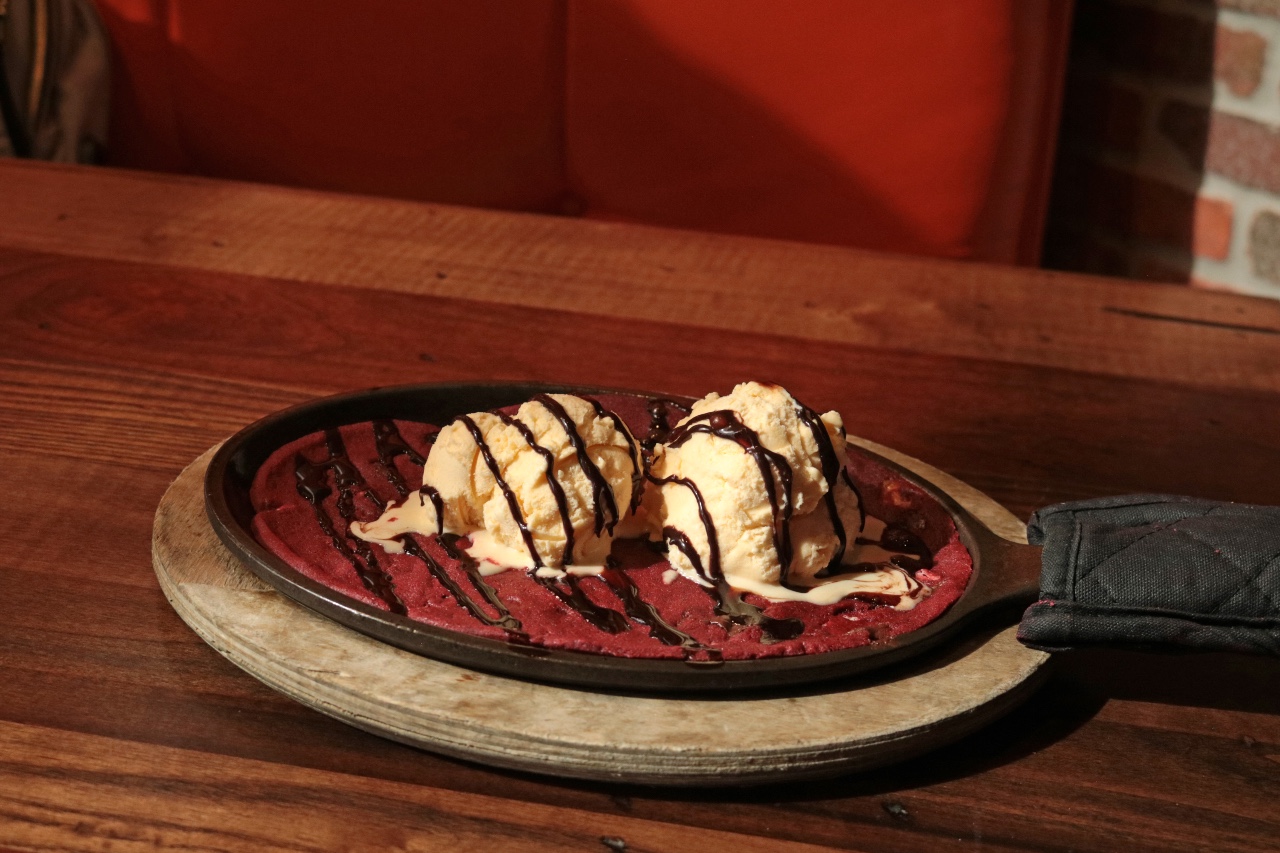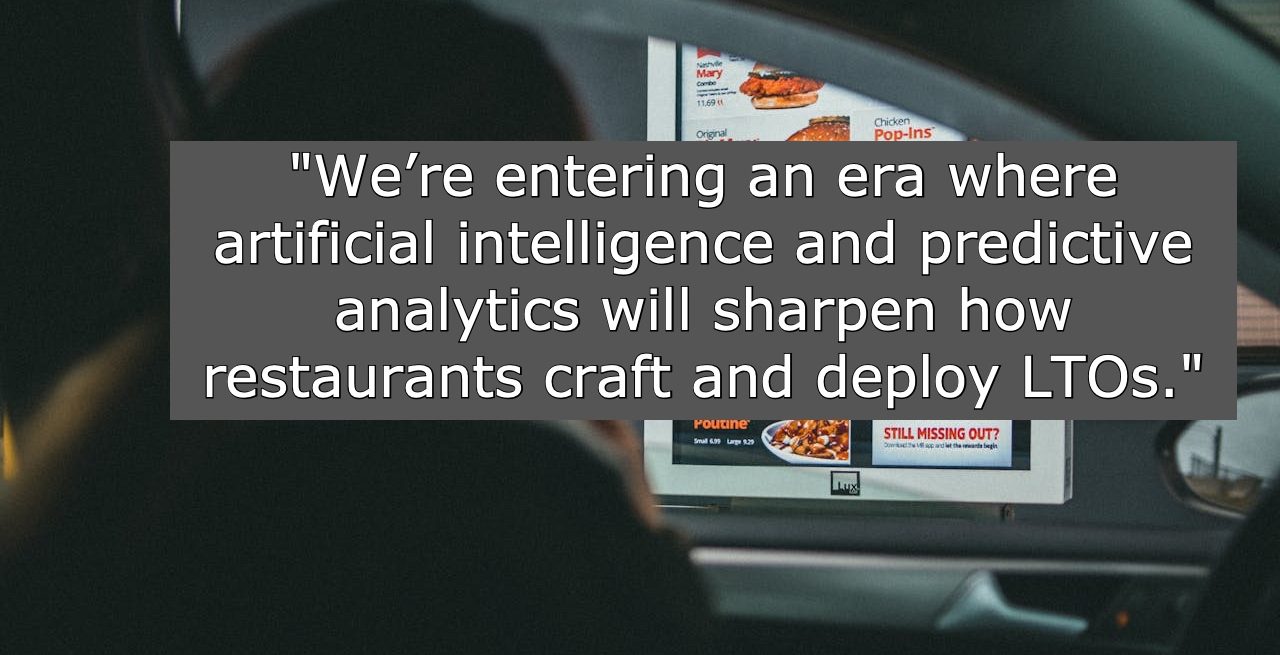Strategic, Data-Driven Success: How Restaurant Brands Can Elevate LTOs
5 Min Read By Ashley Mitchell
Limited-time offers (LTOs) are no longer just marketing gimmicks or seasonal novelties – they are tools for strategic growth. When executed thoughtfully and backed by data, LTOs can drive traffic, increase check averages, test new menu innovation, strengthen brand equity, and even create long-term menu expansion opportunities.
However, not every LTO is created equal. The difference between a successful promotion and one that quietly disappears comes down to how well brands use data to identify opportunities, mitigate risks, and execute with precision.
As someone who oversees marketing for East Coast Wings + Grill and the emerging fast-casual concept Sammy’s Sliders, I’ve witnessed firsthand how LTOs can transform not only revenue but also the ways in which guests interact with your brand.
Why LTOs Still Matter in a Tight Market
The economic environment is constantly changing. Rising food costs, lingering inflationary concerns, and inconsistent consumer sentiment mean operators must make every initiative count. So why devote resources to a time-bound menu item? Because LTOs, when well-crafted, cater to both business and consumer needs:
- Guest excitement and urgency: Scarcity creates action. Guests don’t want to miss out, which accelerates adoption.
- A pipeline for innovation: LTOs allow a brand to test menu ideas without long-term risk.
- Marketing energy: Promotions create opportunities to amplify the brand story and engage with loyal fans.
- Incremental sales: Done right, LTOs can increase average check size and overall frequency.
The key is ensuring that these benefits aren’t left to chance; data must lead the journey.
Step 1: Define Strategic Goals and Success Metrics
Before diving into recipes or campaign creative, start by asking: What do we need this LTO to do?
Not all LTOs serve the same purpose. Some are traffic drivers or a way to quickly jump on a trend, while others are meant to increase upsells by introducing higher-margin items. And some LTOs stand as a tester for innovative menu items with a chance at graduating into full-time offerings.
Once the goal is clear, set measurable objectives, such as:
- Increase traffic in off-peak dayparts (lunch weekdays, afternoons)
- Lift average check by at least eight percent
- Generate a specific number of add-on appetizer or beverage sales with each order
- Achieve 75 percent+ positive guest satisfaction feedback in post-dining surveys
Define what success looks like to your team. Without these benchmarks, the marketing team risks chasing creativity without impact.
Step 2: Leverage Guest Data to Shape the Concept
This is where data earns its time in the spotlight. Restaurants today have more access to data than everbefore between loyalty programs, online ordering platforms, point-of-sale metrics, social listening, and third-party feedback tools. The insights gleaned here should guide menu decisions.
Ask the following questions:
- Which existing menu items perform the strongest across dayparts?
- Which proteins or flavors do guests crave most?
- What price thresholds are guests most sensitive to?
- What menu innovation historically converted first-time guests into repeat visitors?
- Which menu categories need a sales boost?
At East Coast Wings + Grill, for example, data leads all of our decisions. We have an entire department dedicated to unit level economics that looks at every aspect within our four walls and how it impacts the business overall. When planning an LTO, we have a very methodical process to determine which items to launch and, after launch, which of those items might earn a spot on our daily menu.

Step 3: Balance Creativity with Operational Reality
In some cases, the marketing team’s greatest ideas don’t translate into the kitchen. It’s crucial that decisions aren’t made in a silo. Successful LTOs live at the intersection of guest appeal and operational feasibility.
Here, it’s important to rely on your operations and supply chain teams to:
1. Audit kitchen capacity: Can line staff handle the extra execution steps during peak times without compromising speed?
2. Limit vendor disruption: Does the required product fit into existing distribution contracts, or does it involve sourcing complexities that reduce margins?
3. Train effectively: Are front-of-house staff and managers equipped to upsell and explain the offer in ways that both entice guests and enhance their experience?
Here’s another point where data comes into play. Labor and throughput reports can clarify how many new steps or training hours a team can absorb without hurting service. It’s so important to be aligned with your operations and supply chain teams to ensure smooth execution.
Step 4: Design the Marketing Ecosystem
An LTO’s success is dependent on how well the guest understands and engages with it. Consider layering promotional strategies to reach guests across multiple touchpoints:
- Loyalty apps: Push notifications that alert to “early access” for guests.
- Social content: Personalized, snackable media showing the product in high energy, shareable ways.
- In-store merchandising: Table tents, menu inserts, and staff recommendations.
- Community engagement: For regional chains, tie an LTO to local events or seasonal moments.
The data here determines where to spend marketing energy. For Sammy’s Sliders, our research shows digital channels and geo-targeted offers resonate most with millennial and Gen Z diners, whereas traditional banners and window clings still convert well among suburban families.
Step 5: Measure in Real Time
The magic of a data-driven LTO is that you are not waiting to learn success or failure after the run is over. Establish ways to track results daily and weekly:
- POS reporting to monitor attachment rates and upsells
- Social engagement monitoring to track virality
- Guest feedback surveys to quickly pivot messaging if food execution isn’t matching expectations
- Email click-through rates to evaluate positioning
If signs indicate the offer isn’t resonating, brands can adjust in near-real time by either repositioning messaging, enhancing staff incentives to upsell, or refreshing visuals to reignite interest.
Step 6: Extend the Impact Beyond the Campaign
The end of an LTO doesn’t mean the end of its value. Smart brands analyze what worked and turn insights into long-term growth.
Questions to ask post-campaign include:
- Did this LTO increase frequency among loyalty members?
- Which add-ons or pairings proved most profitable?
- Did the food travel well for off-premise orders?
- Is there justification to add a variation to the permanent menu?
At East Coast Wings + Grill, some of our permanent best-sellers had humble beginnings as guest-favorite LTOs. By tracking performance with rigor, we ensure innovation is de-risked and guided by actual demand.
Best Practices for Sustained Success
1. Avoid over-saturation: Too many LTOs can lead to fatigue and diminish their urgency. Keep them tied to clear brand strategy.
2. Tier offers by audience: Provide loyalty members with early access or exclusive versions to increase retention – this also creates an exclusivity that can increase your loyalty guest count.
3. Connect emotionally: Data helps define the “what,” but great storytelling helps guests care about the “why.”
4. Prepare an exit strategy: Don’t launch without knowing how to exit cleanly when inventory depletes or engagement slows.
5. Share learnings across departments: Marketing, operations, and supply chain should each carry insights forward for menu planning, labor models, and supply forecasting.
Looking Ahead: The Evolution of Data-Driven LTOs
We’re entering an era where artificial intelligence and predictive analytics will sharpen how restaurants craft and deploy LTOs. Imagine developing a new sandwich prototype informed not only by last year’s sales, but also by predictive guest flavor preferences derived from loyalty databases, local weather patterns, and current trending search terms.
Restaurants that can harness these capabilities will not only maximize ROI on their LTOs, but also unlock faster cycles of innovation and tighter guest alignment.
For restaurant operators, the temptation is to think of an LTO as a tactical campaign – a way to create a buzz for a few weeks before returning to business as usual. But the most successful brands recognize that LTOs are strategic opportunities, informed and amplified by data, that can fuel broader business objectives.
Whether the goal is to increase traffic, test innovation, or energize loyal fans, the combination of guest insights,operational clarity, and real-time feedback loops separates standout promotions from forgettable ones.
At East Coast Wings + Grill and Sammy’s Sliders, we’ve seen how these principles can lift short-term sales while simultaneously laying the groundwork for scalable growth. In an environment where every investment matters, a data-driven approach to LTOs isn’t optional – it’s essential.

